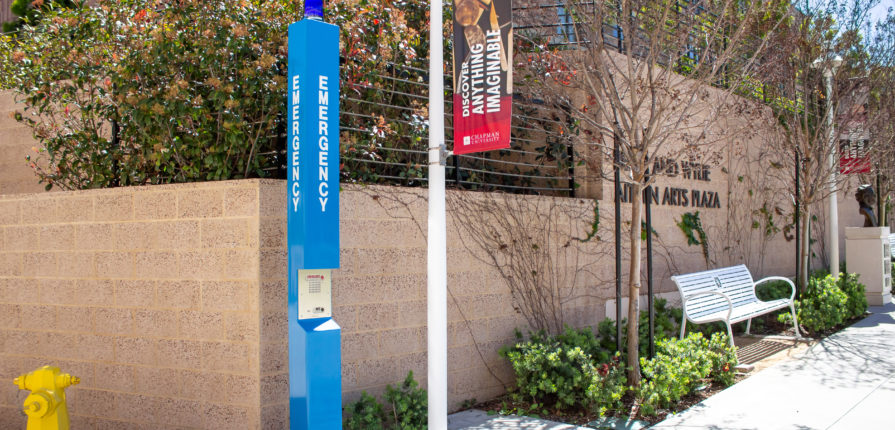In emergency situations, people are more inclined to spectate idly rather than intervene. This is nothing new and has been documented for quite some time and is known as the Bystander Effect. But with the proliferation of mobile technology, this phenomenon has now mutated into a modern form. Bystanders now pull out their smartphones to record such incidents rather than call for help. This is evidenced by an increasing number of stories that crowd the news cycle focused on videos that “go viral.” Whether it’s related to crime, a random act of kindness or cute animals doing cute things, our immediate reaction these days is to record and share on social media. You might be wondering at this point, how are emergency blue light phones relevant to any of this.

Presence and optics
Since its introduction some 30 years ago, ninety-four percent of public and private universities in America use emergency phones according to a 2018 Campus Law Enforcement report from the U.S. Department of Justice. Other businesses, as best practice have implemented emergency phones in less visible places such as parking structures. These are brightly painted, brightly lit poles or wall mounted boxes labeled “Emergency.” These call boxes are typically placed in densely populated areas with high foot traffic or in parking structures. Surveys conducted at universities across the country continue to indicate that students believe such emergency phones provide a sense of safety and peace of mind. Their imposing presence, high visibility and reliability, and integration with security cameras have become a symbol of safety for all and a preventive deterrent for criminals.
One button is all it takes
Unlike smartphones, these emergency phones serve a singular purpose: calling for help. Bystanders that feel compelled to take immediate action rather than spectate or physically intervene during an emergency can do just that by simply pushing the red button. The reason this is important to note here is due to how people react individually during an emergency. How we react depends on the severity and urgency of the situation. Believe it or not, some may get rattled more easily than others which may prevent them from dialing even a three digit number. The presence of an emergency blue light phone offers an easy and immediate access to alert and establish voice communication with police or on site security dispatch. Dispatch can then sound a high volume siren alert or talk down to possibly halt the emergency situation. If a person simply needs help, or is lost, they can talk to dispatch via the emergency phone.
Reliable, resilient, and cost effective
Built to withstand the elements, vandals, and blackouts, although a hard wired solution is most popular, the latest iterations have been designed to operate under a self-sustaining ecosystem through built-in solar panels and wireless or cellular connectivity. This means, costly trenching and build-outs of hard-wire infrastructure for network cabling and connections to power grids are no longer a must. The high costs associated with the installation of these devices are now reduced. Voice and video communications are connected via the client’s provider of choice while emergency calls are concurrently routed to both campus and local police, city dispatchers, or other designated emergency contact of the host location’s choice. As value added features, newer models now come with integrated surveillance cameras positioned on top with a bird’s eye view.
Eliminates the unknown
According to law enforcement agencies, there are a myriad ways mobile phones can be unreliable. Here are some of the most common issues:
- Weak signals
- Police are frequently unable to pinpoint the exact location of the caller
- Dialing 911 creates inefficient three-way comms between local police and campus police
You don’t need them till you need them
Understanding the current norm of spectating rather than helping during emergencies, these phones offer a tangible and visible presence that just might compel a bystander or victim to take appropriate action.
If you are considering installing emergency blue light phones to your school or corporate campus or corporate, we can provide further insight and technical information. Let’s talk.
Email: service@callsierra.com
Phone: 1-(888)-880-4949
Fax: 818-474-7795







